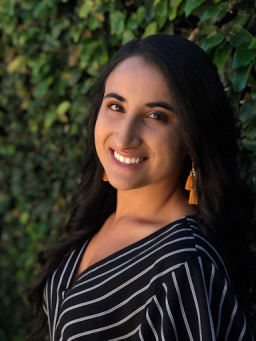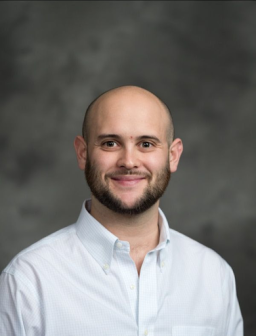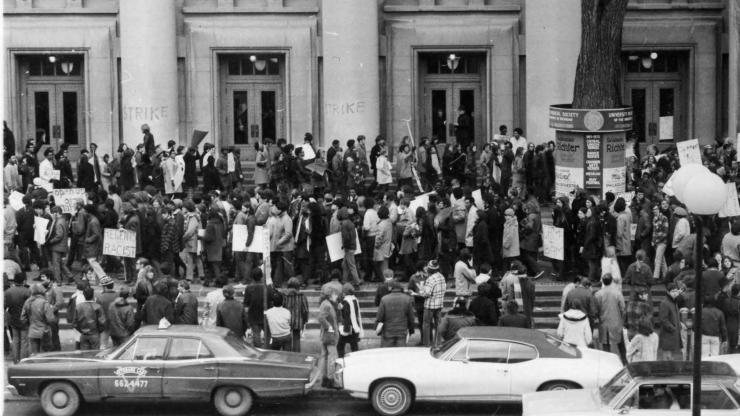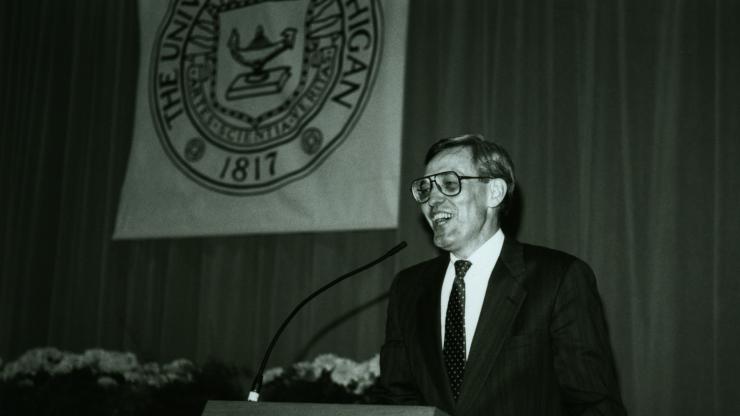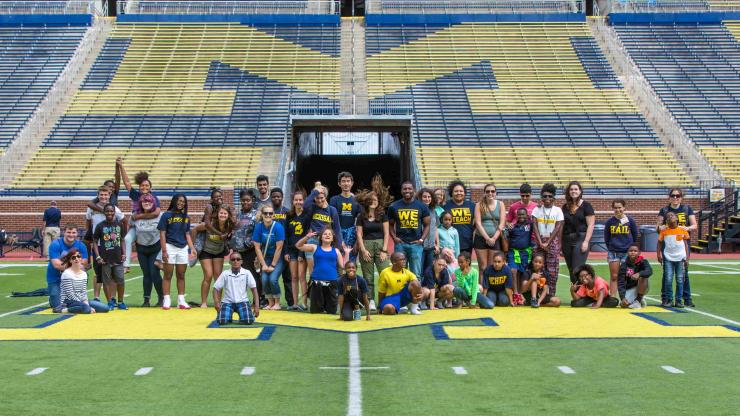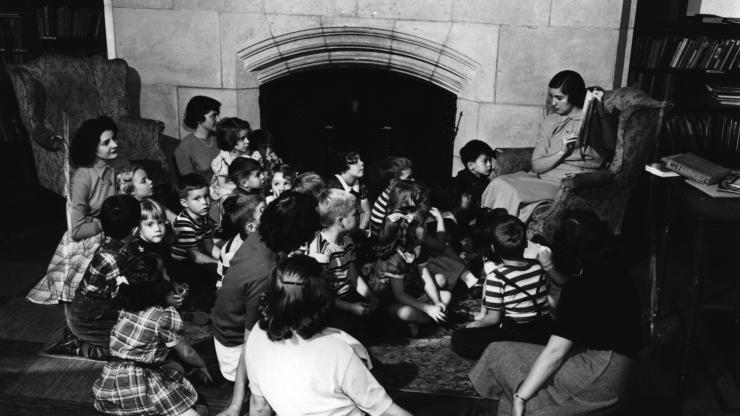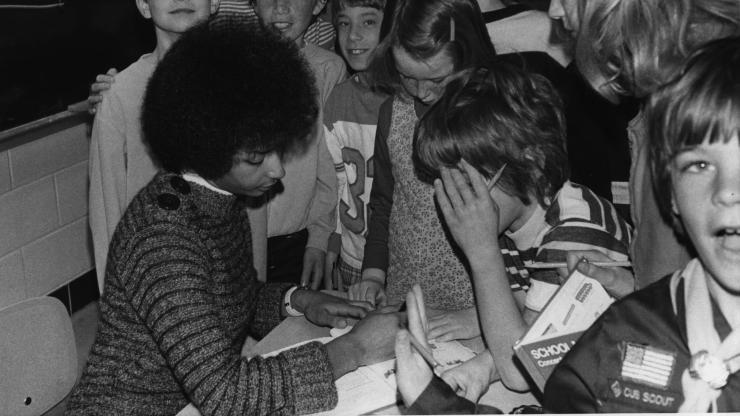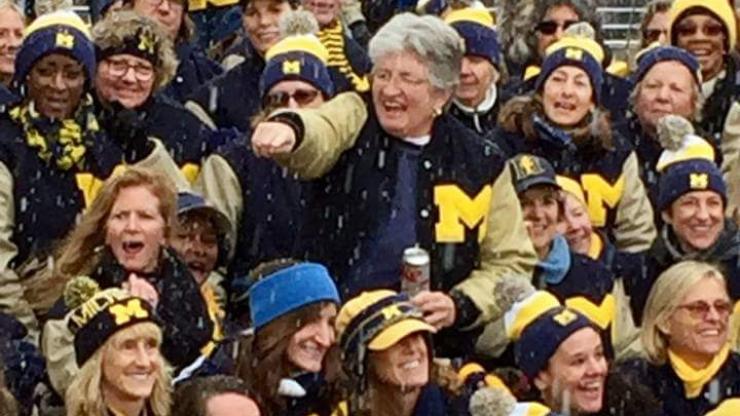Antiracist Mini-Grants Support Student Research
Two student teams investigate biases in campus policing and teacher evaluations
Supporting the work of scholars promoting social justice through their research, the SOE’s Office of Diversity, Inclusion, Justice, and Equity (dije) and the Race and Social Justice Institute awarded inaugural Antiracist Mini-Grants to two pairs of graduate students in the 2020–2021 academic year. The mini-grants are intended to foster research that pushes our understanding of race, racism, and processes of racialization in educational systems in ways that promote social justice.
Jarell Skinner-Roy and Cassandra Arroyo, doctoral students in the Center for the Study of Higher and Postsecondary Education, were awarded a grant for their research project “Safety for Whom? A Critical Spatial and Qualitative Exploration of Campus Policing, Racial Geographies, Surveillance, and Institutional Rhetoric,” which grew out of a class they took in geographic information systems. Arroyo and Skinner-Roy had undertaken a study of campus policing at several institutions in Michigan. The mini-grant will allow them to expand their work to look at additional aspects of the spatial components of campus policing, with a focus on the University of Michigan.
“Even before that, everything that happened over the summer, with the protests going from just being in one state to all 50 states to worldwide, that provided a lot of mobilization, and prompted a lot of institutions to try to respond, including the University of Michigan,” says Arroyo, whose primary research interests focus on the intersection of higher education policy, college access, and success for minoritized students, specifically Latino students. As students mobilized, institutions responded with statements and policies of their own—positions that sometimes created tensions on campuses.
In the fall of 2020, the striking U-M Graduate Employees’ Organization union had included several campus policing reform measures in their negotiations, creating what Arroyo sees as a unique case at U-M. “That warranted further analyses that go beyond just, ‘okay, where are these interactions taking place, who are these interactions affecting,’” she says. To get meaningful answers, bigger questions are needed. “What is the institutional rhetoric that the University of Michigan specifically has used to try to talk about these issues? Have they been effective, have they been particularly harmful? And then getting students’ perceptions to try to align whether institutional rhetoric on campus safety aligns with how students—specifically students of color—are perceiving the environment.”
Skinner-Roy said his interest in this research also extends from his personal experience with campus police as an undergraduate. “Safety can mean something very different to everybody,” he says. “Yet all too often—especially at predominately white institutions—the safety and comfort of white folks are exclusively prioritized at the expense of racially minoritized students, faculty, and staff.” Skinner-Roy’s research focuses on the self-defined success and experiences of students of color in higher education. “I'm really interested in how Black students in particular experience race, racism, and other contextual experiences within higher education, and how those experiences can impact things like identity development,” he says. “And also, what are some things that the institution, staff, faculty, everyone can do to facilitate positive outcomes in a non-deficit-based way.”
The mini-grant-funded “Safety for Whom?” project will use quantitative data from the Division of Public Safety and Security, the U-M Police Department, and the Ann Arbor Police, all of which have some overlapping jurisdiction. “We're trying to disentangle where interactions congregate—they're called hotspots—where a lot of this density of interactions are, and if these locations of densities differ by someone's race or ethnicity,” Arroyo explains. “So, are Black students more likely to be policed and have these interactions in proximity to campus but not directly on campus? If so, does that mean it’s more tied to Ann Arbor Police that this is happening? Or is it that a lot of these interactions are happening in places like the residence halls, which is also very problematic because this is supposed to be the home of our undergraduate students? We are disentangling some of that with a spatial analysis.”
In addition to the data from policing organizations and collecting emails, announcements, and other university communications on campus policing, Skinner-Roy and Arroyo will also conduct focus group interviews with students of color to gauge their perceptions and experiences of policing on campus and their perceptions of the institution’s response, which has included creating the Advancing Public Safety at the University of Michigan Task Force.
Arroyo and Skinner-Roy say that their goal is to make their research accessible and understandable to the campus it serves. This may include reports specific to different audiences including U-M staff, faculty, and students, as well as data visualization components and an interactive map that can filter by the different demographics studied.
The mini-grant will help the team accomplish its goals by funding the production and dissemination of research products, but will also assist in the research itself by providing incentives for focus group participants and enabling the team to purchase high-quality transcription services and data software. “It's really important for us to compensate folks for their time and their energy and their labor,” Skinner- Roy says, “as they are sharing their stories and engaging with us in this research.”
The other team receiving an Antiracist Mini-Grant are doctoral candidate Emanuele Bardelli and doctoral student Matthew Truwit, whose project “Teacher Evaluation Systems: Measures of Instructional Effectiveness or Mechanisms of Structural Bias?” uses quantitative methods to evaluate the biases in current systems of teacher assessments.
Truwit and Bardelli have worked together in the same lab at the School of Education for two and a half years, primarily with Professor Matthew Ronfeldt in partnership with the Tennessee Department of Education.
“We're both former teachers so we know how challenging teaching can be,” Truwit says. He and Bardelli were interested in why so few people choose to become teachers and why so many leave the profession. They study issues of teacher retention and the benefits for all students of having teachers of color.
“Our project feels very much like the culmination of all those different lines of inquiry together,” Truwit says. “Here we're thinking about our teacher evaluation system, something that makes the teaching profession—which is already really challenging—more challenging, especially for teachers of color, who we know are so important to have in the classroom.”
Bardelli’s research focus is on new teachers and their experience of beginning their careers. “This mini-grant ties into that because it will answer the side question that I'm asking in my dissertation, which is ‘can I even trust these evaluation outcomes when I study teaching, the way that I'm starting in it?’” He described the project as an exploration of how good the measures are that he relies on for his own work, and whether there are hidden biases he needs to be aware of.
“We are told that these evaluation systems are objective, and they are not biased, and they are able to measure teaching for what it is,” Bardelli says. “But the more Matthew and I talk about it and learn more about antiracist work, we realize that there are hidden biases in the system that we need to be aware of, especially as we do a lot of work about teachers, and we use this evaluation data for a host of things so we need to be aware if and how these are biased, and against whom.”
Bardelli sees the project, too, as a way to explore what it means to be a teacher in the United States and how that is informed by the history and culture of the country, with its roots of racism and oppression. He hopes that this research will help inform a new way forward.
“Observation ratings and evaluation systems have very clear conceptions of what it means to be a good, effective teacher,” Truwit adds. “To what extent are those imbued with the same sort of oppressive cultural values that it means to be anything in America?”
Truwit says that his and Bardelli’s project is unusual in that quantitative research is more associated with providing evidence as to whether or not a system works rather than assessing ways that it might be improved. “There's tons of documented concerns that quantitative work can't sufficiently reflect the experience and relatedly that quantitative work is never truly critical or transformative,” he says. “I think those are really valid and well-taken points, but at the same time I think there is potential for really skeptical quantitative work that questions the assumptions of the systems that are currently in place, rather than making evidence of what works.
“And so I think as quantitative researchers we have a responsibility to ask questions or pursue lines of inquiry that are not about ‘does this work?’ but rather looking for evidence of what's broken, what's not right.” Truwit says he would like to see his research help hold evaluation policies and programs accountable when they are not working as intended and may even be causing harm.
“For us, the mini-grant was an opportunity to start thinking about these ideas and how to bring antiracist work into our own research,” Bardelli says. He described the grant as an inspiration to build toward a meaningful research product and receive feedback on their work. Truwit added that the funding will be used to purchase statistical software essential to their research, but echoed Bardelli’s sentiment about the value of access to “a community of like-minded scholars” and avenues for dissemination to a receptive audience that being part of a grant initiative provides.
All four grant recipients also took part in the School of Education’s Antiracism Colloquium during the week of May 10–14 to discuss their research.
The mini-grants are part of SOE’s Antiracist Research Program and are administered as direct grants made to students in amounts ranging from $500 to $2,500. The grants are available to any student who wishes to apply, from first-year to dissertating students.
The school is proud to congratulate Jarell Skinner-Roy, Cassandra Arroyo, Emanuele Bardelli, and Matthew Truwit on their awards and for taking up the important work of social justice research.
